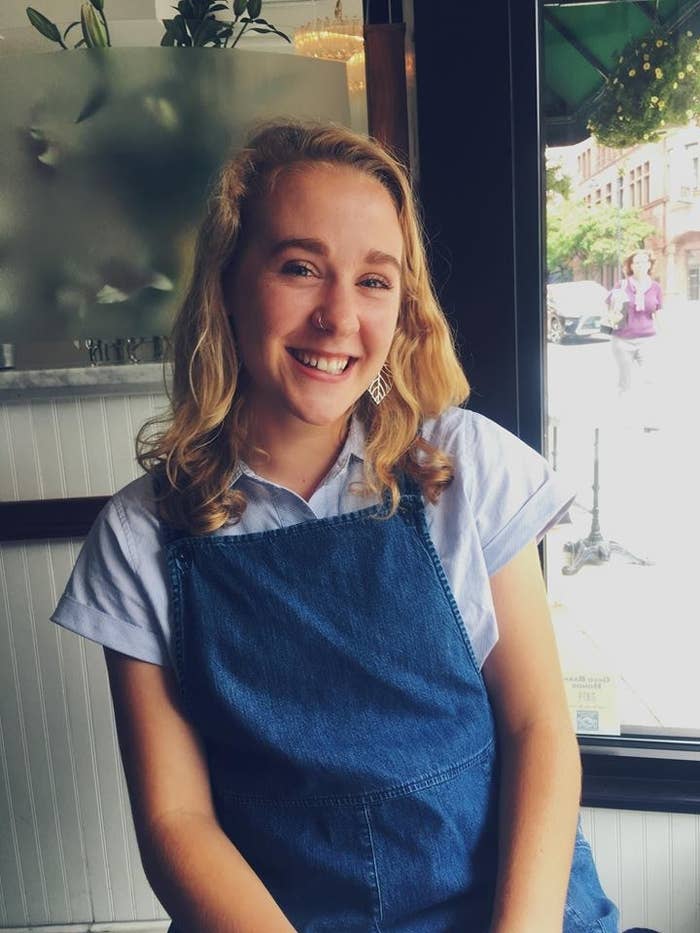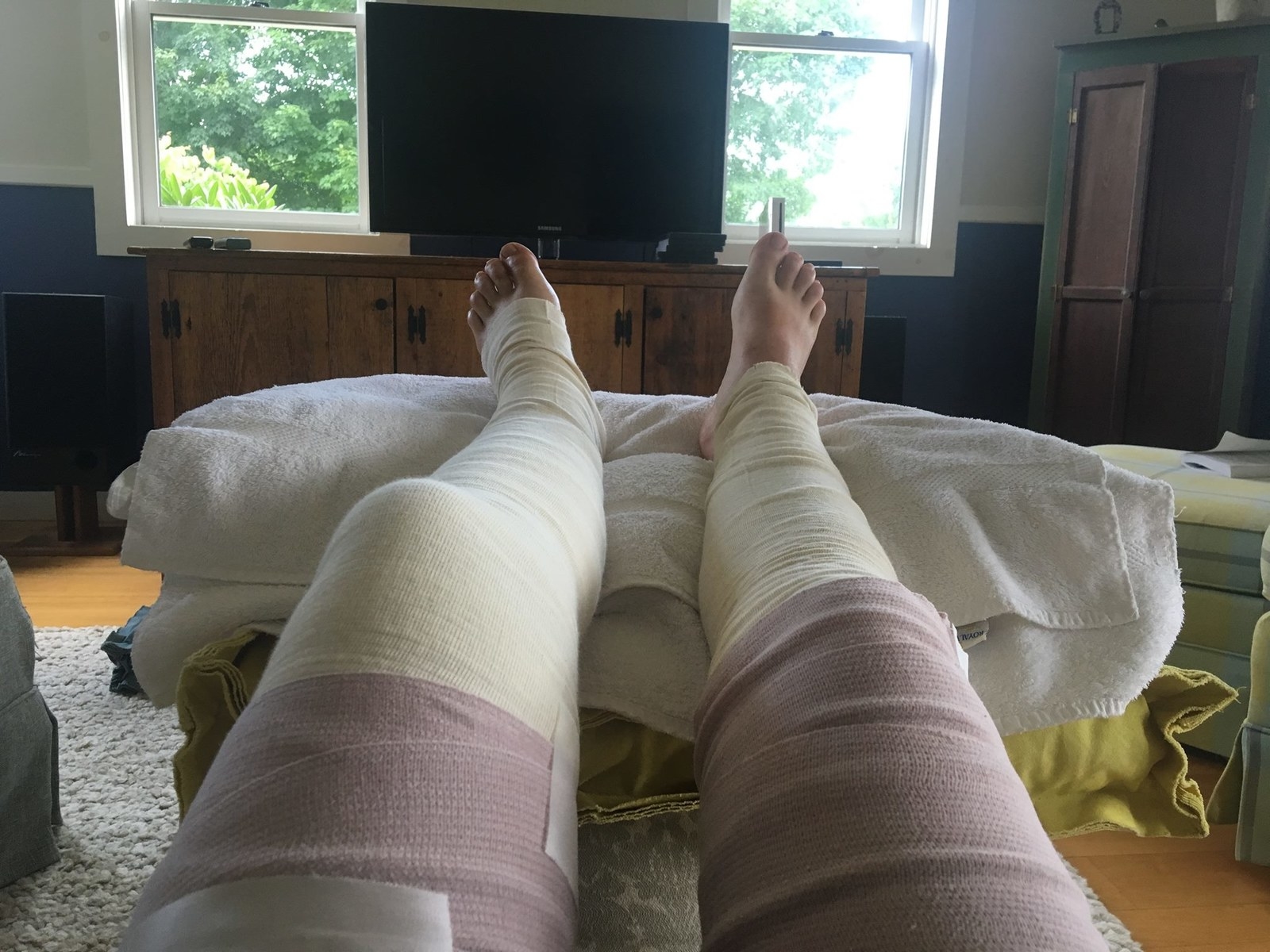Charlotte Murphy, a 21-year-old college student living in Vermont, is warning others after she suffered severe burns on her leg from a wild parsnip plant.

You might have heard about the dangerous giant hogweed plant, but there's another burn-causing weed you need to watch out for this summer: wild parsnip. It also goes by the name "hobo parsnip." The invasive species can cause a severe skin reaction, something that Charlotte Murphy of Essex, Vermont, knows all too well.
The Elon University student is now sharing her story to warn others of the toxic plant after she had a random encounter with one that left her with painful burns that required emergency medical care.
Murphy brushed against the wild parsnip while walking at a highway rest area. She felt fine until a week later, when she woke up with painful blisters.
In early July, Murphy was driving to southern Vermont for her summer job, where she was working on environmental art installations. She pulled over to the side of the highway to stretch her legs. "I was walking along some of the brush and lost my footing a bit and my left leg broke some leaves, but I didn't think anything of it," Murphy told BuzzFeed News.
Murphy was actually aware that wild parsnip could be hazardous, and knew to avoid the tall weed with yellow flowers — but the plant she stumbled into was small and only had green leaves. "I know what wild parsnip looks like, but I didn't know what the leaves looked like, so I wasn't concerned." Then she spent the day working outside in the hot Vermont sun, unaware that the plant's toxic sap was absorbing into her skin.
Murphy noticed a slight rash on her leg a few days later, but it didn't hurt or itch, so she wasn't concerned and went about her week, working outside each day. It wasn't until she was in Boston a week after her encounter with the plant that Murphy noticed her leg was swollen.
"It got very red and itchy, and I couldn't stop itching it, which probably made it worse ... then the next day I woke up with a huge blister and my leg was so swollen I couldn't walk," Murphy said.
The plant's toxic sap can make your skin vulnerable to UV light, which is what caused her second-degree burns. Murphy shared her horrific experience, and photos, in a now-viral Facebook post.
On the drive back to Vermont from Boston, Murphy realized something was seriously wrong. "The blisters had grown exponentially, the big one was almost the size of a tennis ball and they started draining onto my leg," Murphy said. As soon as she got home, she rushed to an urgent clinic.
"The doctors did a test and determined the burn was from a plant, but they had never seen blisters this extreme from wild parsnip," Murphy said. The wounds on her leg were the equivalent of having second-degree chemical burns. It turns out that Murphy's encounter with the plant, and her time spent working outside in the sun, was a double whammy.
Wild parsnip secretes a toxic sap that contains furanocoumarins, chemicals that make the skin extremely sensitive to ultraviolet (UV) rays, according to the New York State Department of Environmental Conservation. The toxic sap, in combination with sun exposure, can cause a severe skin reaction called phytophotodermatitis, which usually starts within 24 to 48 hours of exposure. The reaction can turn into a severe rash or blistering burn and lead to discoloration of the skin or photosensitivity that can last for years.
Doctors saw Murphy's leg and immediately gave her an antibiotic shot to prevent infection, she said. After draining some of the blisters and cleaning away dead skin, they wrapped Murphy's legs in bandages and gave her steroids and more antibiotics. "I went back every day to the burn clinic at [the University of Vermont Medical Center] to get my leg cleaned and the bandages changed — I didn't have the blisters removed until three days ago," Murphy said.
Wild parsnip is an invasive species commonly found in North America. It looks like a tall plant with yellow flowers and often grows around fields, lawns, and roadsides.

Wild parsnip, or Pastinaca sativa, can grow up to five feet tall and has grooved stems and yellow-green compound leaves that look like large celery leaves. It also has small yellow flowers clustered at the top, but these only bloom during the summer after one year of growth. Without flowers, the plant can be difficult to recognize — which is why Murphy didn't know she stumbled into wild parsnip, even though she knew the plant could be a problem.
Even the flowering plant isn't always easy to identify and it may be confused with other flowering plants like Queen Anne's lace, which is harmless, often found in wedding bouquets, and has white flowers. Giant hogweed, on the other hand, is huge — as in 7- to 14-feet tall — and is also toxic, but has white flowers.
Wild parsnip can grow anywhere — fields, lawns, pastures, roadsides, etc. — so it's important to know what the plant looks like at different life stages so you can avoid it in the future.
If you do come into contact with wild parsnip, wash your skin, keep the area covered for at least 48 hours, and stay out of sunlight until you are healed to prevent further burning or discoloration. If you have any concerns or start to develop a severe reaction, consult a physician.
Murphy is recovering well and hopes that her story can increase awareness about the plant so other people don't suffer similar injuries.

"When the new skin grows where the blisters were, I'm pretty much good to go, but I have to monitor my sun exposure and make sure I'm covered in sunscreen so my legs don't get harmed," Murphy said. She said she decided to share her story after feeling a bit down during her recovery.
"I was like, I could either wallow in pain or try to be productive in the best way that I could by spreading the word ... so other people can take the steps I hadn't taken," said Murphy. Her Facebook post has been shared over 77,000 times.
Although she will likely be left with some scarring, Murphy said she's just glad she will be able to recover and get back to her normal life. "I want to give a big shoutout to the nurses and doctors who helped me stay positive — I'm very grateful for all the support I've received."
